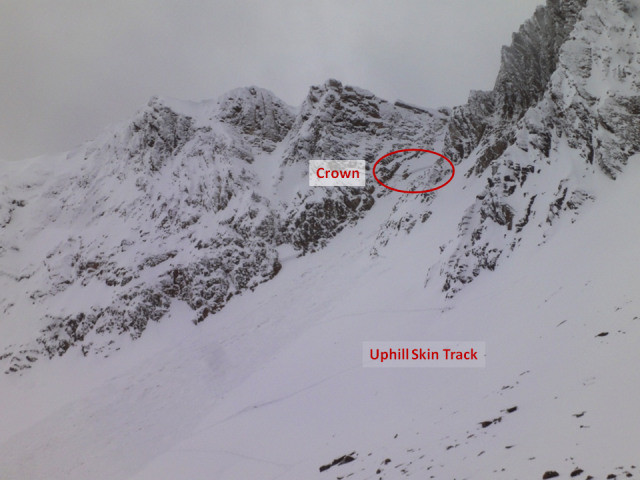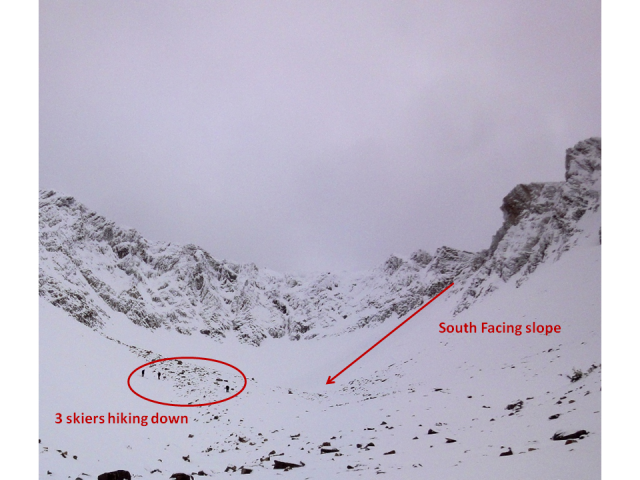Many avalanche incidents are described as "they did everything right" which usually means the party members did pretty much everything wrong, except for the rescue.
This incident is so astounding that pretty much the only thing done correctly was writing it up so that others can learn from what was done wrong. (The victim apparently couldn't even deploy his airbag pack.)
White Darkness: Surviving an Avalanche in the Andes (Welcome to your worst nightmare)
BY UNOFFICIALNETWORKS · OCTOBER 29, 2012
White Darkness: Surviving an Avalanche in the Andes
by: Grant Gary
Welcome to your worst nightmare. You’re tumbling down the side of a mountain inside a wave of snow. You feel like you’re in the ocean except this water is cold and crystallized. As you somersault over and over again, all you can see through your goggles is an eerie white darkness. As your arms flail, you reach for your avalanche airbag. One pull, two pulls, nothing happens. Every time you try to take a breath, it feels like someone is taking a pile of snow and shoving it with all their strength into the very back of your throat. You are choking to death. But this is no nightmare. This is your life, and you are about to die.
Traveling through Chile I had begun to feel like I was invincible. After several weeks of coincidence after coincidence I felt like the luckiest man on the planet. I had hung out with the Brazilian National Snowboarding team, successfully hitchhiked dozens of times, received an offer for a free helicopter ride from a local businessman, scored free lift tickets, cheap lodging, fooled around with beautiful Chilean women and had a couple of articles published by Unofficial Networks. Could life get any better? Yes it could, with 18 inches of fresh Chilean Powder!
Two days after the storm my Swiss friend, two Frenchmen and myself decided to climb up a Volcano that sits atop the ski area Nevados de Chillan. The lift rises to about 7500 feet in elevation and then it’s possible to skin or hike another 3000 vertical feet to the top. It was one of my first times in the backcountry. I had all the gear. Beacon. Check. Shovel. Check. Probe. Check. Airbag. Check. Education. NADA! (That’s Spanish for none). So I did what all non-educated gringos do, I put my trust in another person who I barely knew but apparently had lots of experience in the mountains. Mistake number 1.
The anticipated 3 or 4-hour hike actually took 5. The skin track was icy and at one point I had to take off my skis and bootpack. I never told anyone but I actually fell into a small crevasse while hiking that was about 3 feet deep. It was scary but I wasn’t going to let a little slip deter me. A few hundred feet from the summit the wind began to blow over 50mph. At that point nothing could stop me short of death itself. When I reached the summit only one other person from our four-man party had made it. We talked briefly and it was clear that I was beyond exhausted. I hadn’t packed any food, expecting the hike to take only three hours. Mistake number two. I was woozy and cold and it took my friends wits to tell me to put all my layers back on before I froze to death.
After layering up I looked out and saw the most spectacular sight I have seen in my 28 years on this planet. We were sitting inside the cone of a Volcano and over the edge I could see the spine of the Andes Mountains stretching as far as the eye could see. There is a saying in Haiti “Beyond those Mountains, there are more Mountains”. Never has that saying rang more true for me than during that moment. There were mountains beyond mountains all the way to the horizon.

After snapping a couple of photos we began our descent. In proper backcountry style my partner and I determined safe areas and skied one at a time. 1000 vertical feet below the summit, skiing started to get fun! We were cutting completely fresh tacks on wide-open slopes loaded with 1-2 feet of fresh Chilean Powder. It was complete bliss.
After skiing another 2500 vertical feet we stopped for a chat. We had two options; head back into the ski area or further out into the backcountry. My partner asked if I would “like to ski a really steep part of the mountain”. My brain was so depleted of glucose all I could muster was a foggy “yeah”. So I followed my friend for a 20-minute traverse that brought us to an area in the backcountry known as “The Fingers”. Similar to Squaw’s fingers but this is steeper and longer with fewer cliffs.
As we stood atop the 45-degree pitch it was two in the afternoon and the temperature was scorching hot. Mistake number 3. “Gringo, you go first.” My friend told me in broken English. “If anything happen, go straight”. Four turns later at 30 mph I fell forward and started sliding down the mountain headfirst. It was a strange sensation since I hadn’t fallen like that in years. When I came to a halt I looked over my left shoulder and caught a glimpse of the slide an instant before it slammed into me.
I wish I could say I did something great to survive the avalanche, but the reality is I was simply lucky. When the snow stopped I was sitting on top, completely unburied and all I had was a broken leg. The rest of the story is both heartwarming and harrowing; Three days and three hospitals before I was operated on, but dozens of people showing me incredible kindness along the way, including my American friend Lolo who spent 4 days with me so she could translate and help!
The question I hear most often these days is “are you going to go into the backcountry again?” The answer is an emphatic “yes”, but with the caveat “after I’ve received the proper education”. I made lots and lots of mistakes in the backcountry that almost led to my death. However the biggest one I made was not having enough education to make my OWN decisions in the backcountry. Simply having the gear is not enough! Even if you know how to use the gear that is not enough! THE NUMBER ONE GOAL IN THE BACKCOUNTRY SHOULD BE TO AVOID TRIGGERING AN AVALANCHE! We can only accomplish this through proper education and practice.
My friend was nearly in tears. The ski patrollers looked at me like I was a ghost. As I was sitting in a sled preparing to be lifted into an ambulance a ski patroller came over and looked down at me. His eyes were kind. He was backlit by the ethereal blue sky of a late Chilean winter day. “You are very lucky to be alive…never forget that”. I never will…

